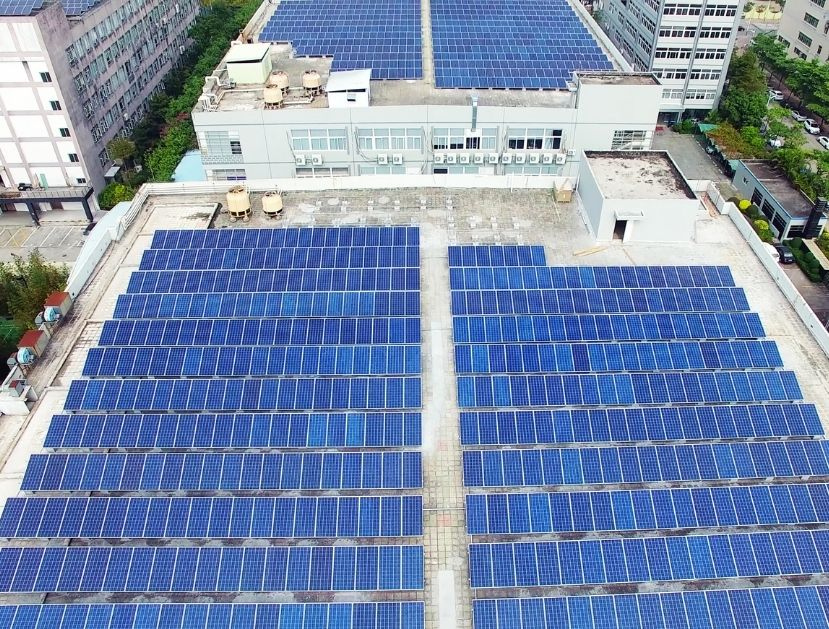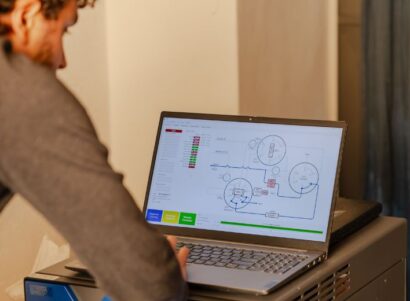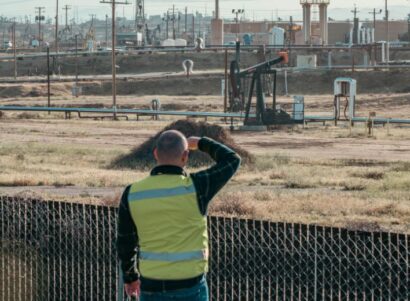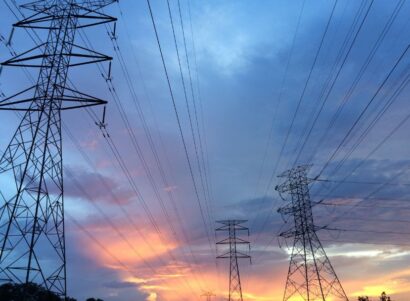Analysis: Design Trade-Off Considerations for Solar and Storage for Community Resilience Hubs
Across the United States and around the world, power outages—especially those driven by extremes in weather caused by climate catastrophe—are increasing in frequency and duration (Mukherjee, 2018; Behnert, 2018; Australian Energy Market Operator, 2017). Resilience Hubs have the potential to support communities with critical services that mitigate the impacts of disasters, but only if the hub can provide electricity during these disasters. The Asian Pacific Environmental Network (APEN) defines Resilience Hubs as “physical institutions that offer space for community members to gather, organize, and access resilience-building social services on a daily basis, and provide response and recovery services in disaster situations.” Designing and implementing a resilient power system for a Resilience Hub forces unavoidable trade-offs between cost, duration, capability, and environmental impact. A cheap system provides less power and won’t last during long outages. A high-power system that provides lots of power for long outages will not be cheap. Ease of use and adaptability can also add design complexity and cost. How can we decide what is best? A few of the trade-offs between economic and resilience considerations are detailed below.
Economic Optimization vs. Resilience Optimization
In standard daily operation, energy storage rarely provides economic benefits for residential and small commercial customers. Backup generators and battery storage systems usually cannot compete economically if the grid provides 100% of their electricity needs all of the time; the grid is normally cheaper, cleaner, and more efficient. Especially for everyday operation under fixed electric rates*, the optimal investment might be a solar-only system because it can offset regular electricity use with a lower upfront cost than a solar and storage system. That said, some utilities charge Time-of-Use (TOU) rates that vary by time of day and day of week. Batteries can help you avoid using electricity during the most expensive rate periods. Under California’s current TOU rates, the most expensive time of day to use electricity is typically 4pm to 9pm, just as solar production drops with the setting sun. An economically-sized battery allows you to store solar power generated during the cheapest hours of the day for use in the most expensive hours and can often make financial sense. A small battery system used to shift loads to save money under TOU rates will typically not provide significant backup electricity during a prolonged outage, but it will provide uninterrupted power during outages that last only a few minutes or a few hours.
________________________________________
*Utility energy rates generally fall into three categories: 1) Fixed (or Simple), such that the rate is the same each day and at all times of day; 2) Tiered, such that the rate depends on how much energy is used (e.g. the first 1000 kilowatt-hours (kWh) per month at price 1, use above that at price 2); and 3) Time-of-use (TOU), such that the utility charges a different rate depending on the time of day and the day of the week.
Resilience Optimization
Resilience Hubs require solar and storage systems designed specifically to provide energy services during emergencies, and that demands significantly more battery storage than a TOU load-shifting battery. Many factors go into how much storage is required, and what other design options should be considered. A Resilience Hub will have to make trade-offs in order to provide the required services within limited budgets. A few examples of the trade-space are shown in the table below, with additional details following.
Table 1: Comparison of three solar and battery designs for a Resilience Hub. The dollar values shown are for costs and economic benefit (energy provided locally, not purchased from the grid) during normal operations. The value of resilient energy is not included, but costs for storage provide energy for a four-day outage are included. The “Unconstrained” design allows for solar power that would not fit on the building rooftop, thus requiring additional ground-mounted solar panels. The “Realistic Roof” designs constrain the solar power such that it could realistically fit on the building rooftop.
- Cheap but limited capability. Although clearly not large enough to support a resilience hub, a 10 watt solar panel paired with a 5 watt/11 watt-hour2 battery costs only about $120. In a reasonably sunny environment, this kit could keep a few smartphones charged indefinitely. While cheap, resilient, and environmentally benign, the capability is quite limited. This option is not shown in the table above, as it is too small to compare to the building-scale systems.
- Full backup but expensive (A). In this example, a two-building community center totaling 12,000 square feet of floor space, maintaining 100 percent of normal services during a four-day outage during peak energy usage in September would require a 260 kilowatt (kW) solar array and a 60 kW battery with 460 kilowatt-hours (kWh) of storage capacity. The system would cost $670,000. Although the capital cost is high, this still has a positive net present value (NPV)3 of about $160,000. Even so, the capital cost is likely prohibitive for most non-profit community centers, and there is typically not enough space for 260 kW of solar panels on rooftops; if space was available for ground-mount solar, this would require 20,000 square feet (almost half an acre) of solar panels.4
- Full backup with realistic rooftop solar (B). The roof space available for a solar array on 12,000 square feet of building space would typically be enough for about 85 kW of panels. With only 85 kW of solar power, to achieve 100 percent of normal services during the four-day outage described above would require a 50 kW battery with a massive 3,000 kWh of storage capacity. The cost for such a massive storage system grows to $1.4M, and the net present value drops to -$0.96M. Because the solar capacity is constrained, the battery must now be large enough to support the load that can’t be met by the solar input over the duration of the outage, basically storing almost four days of energy all the time.5
- Critical load backup with realistic rooftop solar (C). With the constraint of an 85 kW maximum for the solar array, the Resilience Hub could reduce services, and thus reduce the critical load to 25 percent of normal operations in order to make the system finances more realistic. This system would require a 10 kW battery with 100 kWh of storage capacity, and require $200K in capital costs with a net present value of $150K.6
________________________________________
2. Watts are a measure of power, watt-hours are a measure of energy. A 100 watt (W) lightbulb uses 100 W of electrical power to operate. Left on for 10 hours, that bulb would consume 1,000 watt-hours (Wh) of electrical energy. One thousand watt-hours is called a kilowatt-hour (kWh), so this could also be shown as 1 kWh.
3. NPV applies an interest rate to future income and expenses to determine what the sum would be worth today. A positive NPV indicates a positive return on investment. A higher NPV indicates a better investment.
4. Typically about half of a building’s roof space would be available for solar, as some areas are shaded or obstructed with equipment. Assuming a single-story building with 12,000 square feet of roof space and typical solar panels rated at 14 watts per square foot, the available solar capacity would be 80-90 kW. Where real estate is available, ground mount or parking structure solar installations could make up the difference. The 20,000 square feet required for this option would cover almost half an acre, and may be larger than the available roof and ground space available on an urban parcel.
5. A diesel generator could help reduce the amount of battery capacity required, but it requires refueling, depends on fossil fuels, generates pollution, and often fails to run during an emergency.
6. Because the 85 kW array provides enough energy each day to serve the 25 percent critical load most days, this system would also last through longer outages than four days. During the rainy season, extreme fog, or a smoke event that blocks out the sun (like the one that occurred in California in September of 2020) the solar production might not meet all of the energy needs.
Community leaders and stakeholders pursuing a Resilience Hub have some key decisions to make, driven in large part by the value of resilience during an emergency. With these examples in mind, and considering available budget, they must decide
- Whether the whole building/system/campus should have full power during backup, or only some critical loads?
- How long of an outage should the Resilience Hub be designed to manage?
- Whether the system should be simpler to operate, or more flexible and adaptable (likely requiring more skilled operators)?
These are not independent decisions. For example, if only critical loads need backup power, will those be on a separate power circuit? Or will people have to shut down equipment in the event of an outage to make sure power is available for the critical loads? We will explore these options below.
- Whole System Backup vs. Critical Loads (with a Sub-Circuit). Larger loads and longer run hours will require more batteries and more solar to charge the batteries each day. Roof space may limit how much solar capacity is available, which then limits the amount of critical load that can be served for long outage durations.
- Do operational hours change? During a power outage, what is the schedule of services provided? Will operating hours be the same as normal, or shorter, or longer?
- Does the system need to meet all loads or just some loads?7 During a power outage, what will electricity be needed for? Does the site need to operate at 100 percent of normal capacity, serving all the same electricity needs that it did while the grid was available? Does it actually need more electricity than it would during normal operations (e.g. it serves as an emergency shelter with high occupancy and high cooling and ventilation needs)? Or is the critical load a small fraction of the normal load that can be isolated on a separate electrical system (a sub-circuit). For example, if the critical load consists of only phone charging and wifi, but no lighting, no air conditioning, and no other energy-intensive services, a small portable backup system could meet the needs. If more services are required, integrating solar and storage with the building electricity will also be required, and determining how non-essential systems are de-energized becomes either a planning/design problem (e.g. critical systems can be placed on a separate sub-circuit) or an operational problem (e.g. someone has to shut off all non-essential equipment during an outage).
- Do the required services change over the duration of an outage? Can the site transition to minimal services over time such that they can be more sustainable for a long outage? Or, must the site provide more and more services as the power outage extends and peoples’ independent resilience capabilities are exhausted and more people are coming to the Resilience Hub? If the second condition is true, the Resilience Hub might need to coordinate with state and federal authorities for additional emergency services and equipment.
- Design for “Normal” Outage Duration vs. “Worst Case” Outage Duration
- How do we define cases? First, what is normal and what would be the worst case? Without diving into risk, probability, and statistics too deeply, consider:
- According to utility reliability reports, the average outage duration for customers served by PG&E was approximately two hours in 2019. But reliability reporting rules allow utilities to exclude some outages that are considered “abnormal” events, such as California’s public safety power shut-offs (PSPS) and outages from hurricanes and other natural disasters. The outages often excluded from utility reporting are likely the ones that drive the need for more resilient power; in any case, two-hour outages are not a resilience problem to drive the design of a Resilience Hub.
- Outages and other blackouts caused by extreme weather last much longer than two hours.
- During the outages from the Texas ice storms in February of 2021, some areas were without power for more than three days.
- Hurricane Irene in 2011 caused 6.7 million customer outages in 14 states and the District of Columbia. Half of these outages lasted more than two days, and 10 percent were longer than four days.
- Hurricane Sandy caused power outages for 8.7 million customers across 20 states and the District of Columbia when it hit the northeast United States in 2012. Half of these outages lasted more than 2.5 days and ten percent lasted more than a week, with some extending to almost two weeks.
- California’s PSPS events have impacted 3.2 million customers over the last nine years, with an average outage duration of 44 hours (~two days). Ten percent of PSPS customer outages have been longer than 96 hours (four days), and the longest PSPS customer outages reported so far were 142 hours (~six days). This long event impacted only a small fraction of customers (fewer than 3,000 customers of the 15 million utility customers in California), accounting for less than 0.1 percent of PSPS outages.
- Considering these longer-duration outages, it seems reasonable to plan for:
- Two-day outages as “normal.” A system designed for this would have capacity to ride out about half of the long-duration outages that drive the need for Resilience Hubs. That also means that half of the outages will outlast the Hub’s ability to provide services, which doesn’t seem to meet the requirements of a Resilience Hub.
- One-week outages as a “reasonable worst case.” This will provide capacity to ride out ~90 percent of outages. Ten percent of outages will exceed the design duration; active management could extend the duration during a given outage, and costs for longer durations rise quickly.
- Two-week outages as a “worst case.” This would provide capacity to ride out more than almost all outages, but also would require significantly more solar power and battery storage.
- How do we define cases? First, what is normal and what would be the worst case? Without diving into risk, probability, and statistics too deeply, consider:
- How long of an outage should we plan for? So should the design focus on resilience for two-day or two-week outages? The answer depends on the Resilience Hub’s mission, services, resources, and an acceptance of outcomes if required services could no longer be provided.
- If we design for a two-day outage, and half of outages last more than two days, what happens after two days? Will users accept a community Resilience Hub that fails to provide services through half of the outages experienced? Does two days provide users enough time to plan and get services elsewhere? Are services likely to be available elsewhere?
- If we design for a week-long outage, less than ten percent of emergency events should exceed the resilience capacity of the hub described in the scenarios above. Can we accept that outcome? Would the additional five days give us more time to refer users to other service providers? Will users accept a community Resilience Hub that successfully provides services through 90 percent of outages experienced?
- Designing for outages lasting multiple weeks means that only outages exceeding resilience capacity should be extremely rare, but the cost to achieve this level of resilience will be extremely high unless the services provided are very limited. Should those resources be spent on something that has a higher probability of occurrence than 1/1000? Users will accept a resilience hub that successfully provides services through 99 percent of outages experienced, but will they accept that the cost of this level of resilience reduces the services provided during outages, or reduces other services due to cost constraints?
- Potentially, we could select a design that provides some services for shorter outages and limited services (like phone charging) during longer outages. This level of flexibility would require some more complicated management during an outage, as discussed below.
- Ease of Use vs. Flexibility
- Ease vs. flexibility trade-offs. A solar and storage system that is easy to operate, flexible and adaptable to different emergencies with outages of various durations that could provide an optimized mix of services for each would be ideal. This would be complicated to design and expensive to build. To achieve an affordable but still effective system, there are several ease vs. flexibility tradeoffs to consider, including what systems should be on a backed-up sub-circuit and how should that circuit be managed? As discussed above, whole system backup will necessarily cost more, as it would require more solar panels and more batteries. Selecting a set of critical loads to be backed up during an emergency requires that either these systems be on a sub-circuit, or require significant effort during an outage to ensure non-essential equipment doesn’t use energy for non-critical missions. A flexible design could have multiple options for long-term support of critical loads, short-term support for other important loads that can be turned on if needed, with even more complexity in wiring, operations, or both.
- The two-building community resilience hub presented in the examples above provides an example: should the solar and battery be designed to back up each building independently, or one building only, or both buildings together? These considerations could inform design that would create more flexibility during an event, given some planning and training for leaders and operators. Other designs would be easier to operate but would limit the ability to adapt to changing needs during an outage and over the years.
- Easiest to operate. The easiest system to operate would keep each building separate, identify the set of services to be available at each building during an extended outage, and put the equipment necessary for those and only those services on a sub-circuit in each building. During an outage, those devices would remain powered, while everything else would not. This would be easy to design and would take no management to implement during an event, and would allow a small, cost-effective solar and storage system design to meet these needs. It would also be limited in ability and flexibility to adapt to user demands in a specific outage, and over time.
- Most flexible. Designing a system that can be configured for a wide range of uses would require that the solar and storage system can provide enough power for all the equipment at the site, at least in the short term. In effect, this means that the power rating (kW) of the inverter and battery must be able to power the HVAC, lighting, and outlet loads at the same time. This will require higher power batteries and inverters than a system designed for smaller critical loads. While a microgrid would be ideal, it may l be difficult to get this permitted and built in the short term. As an alternative, we might consider installing a battery storage system on one building, which would be connected to solar arrays on both buildings. During an outage, the battery could recharge using power generated by both solar arrays. Let’s accept for now that this is flexible enough, even though only one building can provide critical services under this model. Given this design, the building staff must have and execute a plan to manage energy use during an outage. This will include determining the loads that can be supported immediately and over the longer term. As an outage occurs:
- The solar and storage system would be designed to disconnect from most of the building load and only support critical equipment on a sub-circuit.
- Leadership at the site must determine if some other high-priority systems could be turned on, without jeopardizing the long-term resilience of the site. To make these decisions, they must determine whether providing high power services now and in the near future is worth more than continuing to provide lower power services for days or weeks.
- Making this decision may require estimating how long the outage will last and what services might be needed in the near and long term. In many cases, this may be difficult to estimate; the Hurricane Sandy outage extended to 2 weeks in part because of a winter storm that followed the storm.
- Systems must be designed and built to make restart and shut-down of equipment feasible and safe (i.e. HVAC will be critical for the next 4 hours, as air quality is dropping rapidly). Most importantly, there must be a way to safely and easily power some or all of the HVAC without lots of engineering support. As the air clears and these systems become a lower priority, they must be safely shut down to conserve energy for critical services.
- Hybrid designs. The previous two examples are edge cases. There may be hybrids between optimal ease and optimal flexibility that provide the best of both. Identifying these will improve the technical and leadership capabilities of the people deciding how to balance energy and mission needs.
________________________________________
7. Some energy consumption rules of thumb for consideration during outages:
- Heating, ventilation, and air conditioning (HVAC) typically account for 30-50 percent of a building’s annual energy use. In hot climates or seasons, HVAC might even account for more than 75 percent of a building’s energy consumption. If a site wants to maintain 100 percent of normal operations during an outage, the solar and storage must be sized accordingly. Augmenting rooftop solar with ground mount solar to increase the energy input will help. Otherwise, HVAC may only be feasible for parts of the buildings during an outage. Ensuring that the HVAC design and control can enable the ability to efficiently serve some but not all zones in the buildings will be essential.
- Lighting is typically 20-40 percent of a building’s annual energy consumption. Replacing inefficient fluorescent lights with more efficient LEDs can cut lighting energy consumption in half. Taking advantage of natural light during the day can further reduce energy consumption. Turning off lights that aren’t in use can save energy too; motion sensors can help but are relatively expensive compared to the savings. While important in everyday savings, these efficiencies are vital to extending the amount of time a site can operate without the grid.
- Bottom line: efficiency is great for the environment and critically important for resilience.
Conclusion
Trade-offs are unavoidable. Cost, duration, capability, and environmental impact are all considerations that must be weighed against the others. Complicated systems may offer flexibility, but they will demand expertise to operate. Without expertise, complicated systems will add risk. At the same time, simplicity creates its own risks, as simple systems may limit the ability to adapt to changing situations in a given outage and to changing conditions over time. In sum, consider the trade-offs, and document the decisions and the rationale behind them so that these decisions can be revisited and improved over time.


 Designing Solar and Storage for Community Resilience Hubs: Analysis
Designing Solar and Storage for Community Resilience Hubs: Analysis












